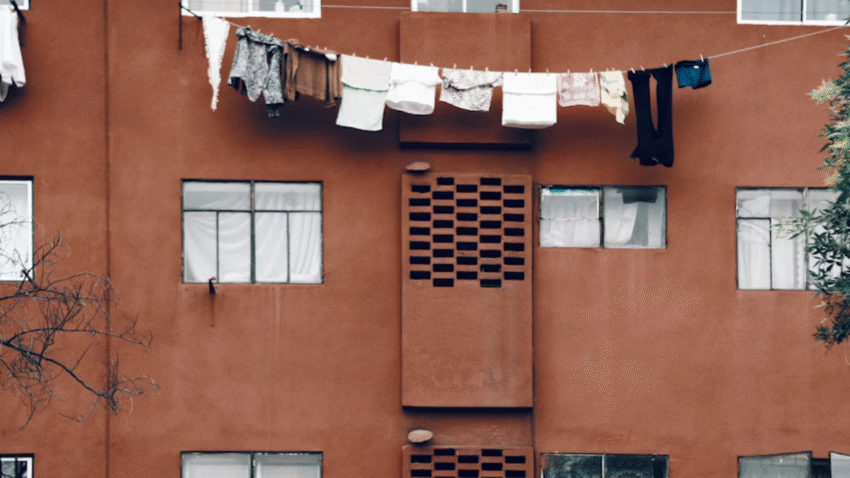Introduction
Dryers are convenient, but they are also one of the most energy-hungry appliances in the home. Switching to air drying can drastically reduce your electricity bill, extend the life of your clothes, and be gentler on the environment. The good news? Air drying doesn’t have to mean stiff fabrics or long drying times. This guide will walk you through how to air dry clothes to save electricity while keeping them fresh, soft, and ready to wear.
Why Air Drying Matters for Your Laundry Room
Air drying is more than just an energy-saving tactic—it’s a win for your wallet, your wardrobe, and the planet.
Benefits include:
- Lower Energy Bills: Air drying eliminates the cost of running the dryer.
- Longer Garment Life: Avoids heat damage, shrinkage, and color fading.
- Eco-Friendly: Reduces your household carbon footprint.
- Fresh Scent: Outdoor drying leaves clothes smelling naturally fresh.
- Lower Heat Indoors: In hot weather, avoiding the dryer keeps your home cooler.
Whether you use a clothesline, drying rack, or hangers, the key is to set up your air drying system for efficiency and fabric care.
Step-by-Step Guide to Air Drying Clothes
1. Choose the Right Drying Method for Your Space
Different homes have different drying needs. Select what works best for you:
- Outdoor Clothesline: The most energy-efficient and fastest drying option.
- Folding Drying Rack: Perfect for small spaces and indoor drying.
- Wall-Mounted Rack or Pulley Line: Great for laundry rooms or balconies.
- Hangers: Ideal for shirts, dresses, and delicate fabrics to avoid wrinkles.
2. Shake Out Clothes Before Hanging
Give each garment a good shake to loosen wrinkles and help fibers fluff up. This step speeds drying and reduces the need for ironing.
3. Hang Clothes Correctly for Faster Drying
- Shirts and Tops: Hang from the hem or use hangers to keep shoulder shapes intact.
- Pants: Clip at the waistband or fold over the line to balance weight.
- Towels and Sheets: Hang fully open rather than folded to maximize airflow.
- Delicates: Lay flat on a drying rack or mesh surface to prevent stretching.
4. Use Clothespins or Clips Wisely
Place pins at seams or inconspicuous areas to avoid leaving marks. For delicate fabrics, use padded clips or hangers.
5. Position for Maximum Airflow
For outdoor drying:
- Hang clothes in direct sunlight for whites to naturally brighten and disinfect.
- Use shaded areas for dark or bright-colored clothes to prevent fading.
For indoor drying:
- Place racks near open windows, fans, or dehumidifiers for better airflow.
- Avoid damp or poorly ventilated rooms to prevent musty odors.
6. Time Your Drying for Efficiency
- Outdoor: Mid-morning to mid-afternoon is ideal for sunlight and breeze.
- Indoor: Dry clothes during the day when natural light and warmth help.
- Avoid leaving clothes outside overnight to prevent dampness from dew.
7. Rotate or Flip for Even Drying
If items are thick or drying slowly, flip them halfway through or move them to a different spot for better airflow.
8. Use a Spin Cycle Before Air Drying
Before hanging, run your washer’s high spin cycle to remove excess water. This can cut drying time by 30–50% and prevent dripping indoors.
9. Soften Clothes Naturally While Air Drying
To prevent stiffness:
- Add ½ cup white vinegar to the rinse cycle as a natural fabric softener.
- Shake garments again when partially dry to loosen fibers.
- For towels, tumble in the dryer for 5 minutes after air drying to restore fluff (optional).
10. Fold or Hang as Soon as Dry
Once items are completely dry, fold or hang them immediately to prevent wrinkles and keep laundry fresh.
Common Mistakes to Avoid
- Overlapping Clothes
- Mistake: Hanging items too close together slows drying.
- Solution: Leave space between garments for airflow.
- Ignoring Fabric Care Labels
- Mistake: Some fabrics can stretch or fade if dried incorrectly.
- Solution: Check care tags and adjust method accordingly.
- Drying in Poor Ventilation
- Mistake: Indoor drying without airflow can cause musty smells.
- Solution: Always ensure good ventilation or use a fan.
- Leaving Clothes in Direct Sun Too Long
- Mistake: Prolonged exposure can fade colors.
- Solution: Remove clothes promptly once dry.
- Skipping the Shake Step
- Mistake: Leads to stiffness and extra ironing.
- Solution: Shake out items before hanging and halfway through drying.
Extra Laundry Tips & Hacks
- Use Dual Lines for Sheets: String two parallel lines close together so you can drape sheets over both without sagging.
- Hang Inside Out: For dark colors, hanging inside out protects from fading.
- Dry in Batches: Dry heavier items separately from lighter ones so airflow isn’t blocked.
- Portable Racks: Keep a small foldable rack handy for quick indoor drying of delicate items.
- Seasonal Adjustments: In winter, dry clothes near a sunny window or heater (but not too close to avoid damage).
For more energy-saving laundry ideas, check out our “How to Wash Clothes with Less Water and Energy” guide to pair with your air-drying routine.
Conclusion
Learning how to air dry clothes to save electricity is about more than skipping the dryer—it’s about using smart hanging methods, proper spacing, and good airflow to get clothes dry quickly and gently. With the right setup, you’ll save money, protect fabrics, and enjoy the fresh scent of naturally dried laundry.
Pro Tip: Make air drying your default method and reserve the dryer for emergencies or specific items—your clothes, your budget, and the environment will thank you.
Bookmark this guide so you can refer to it every time you want to save energy on laundry day.
